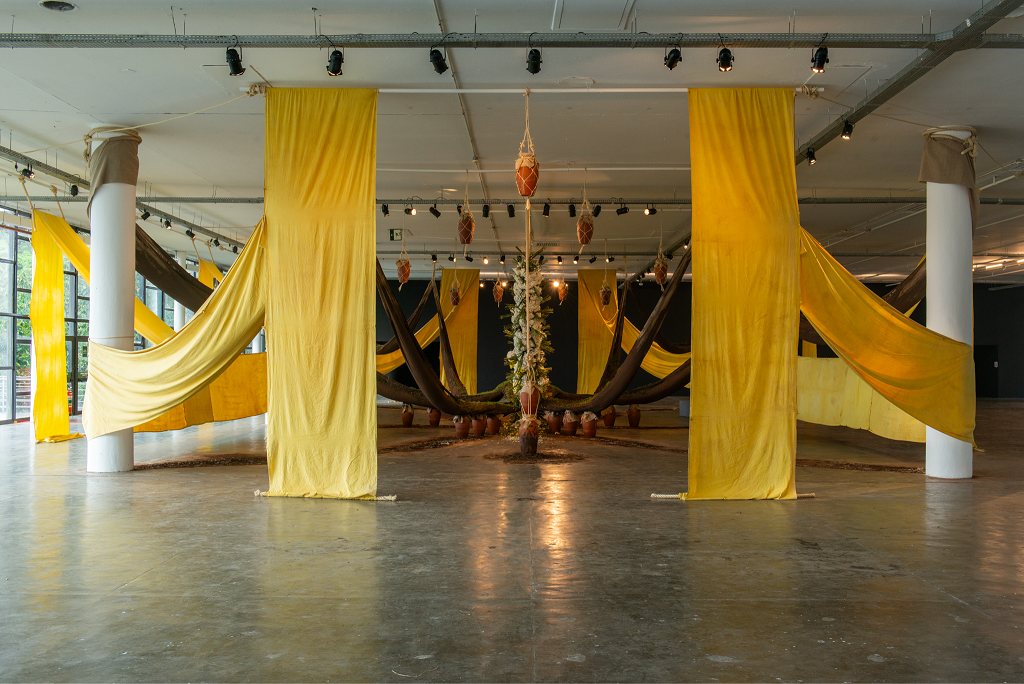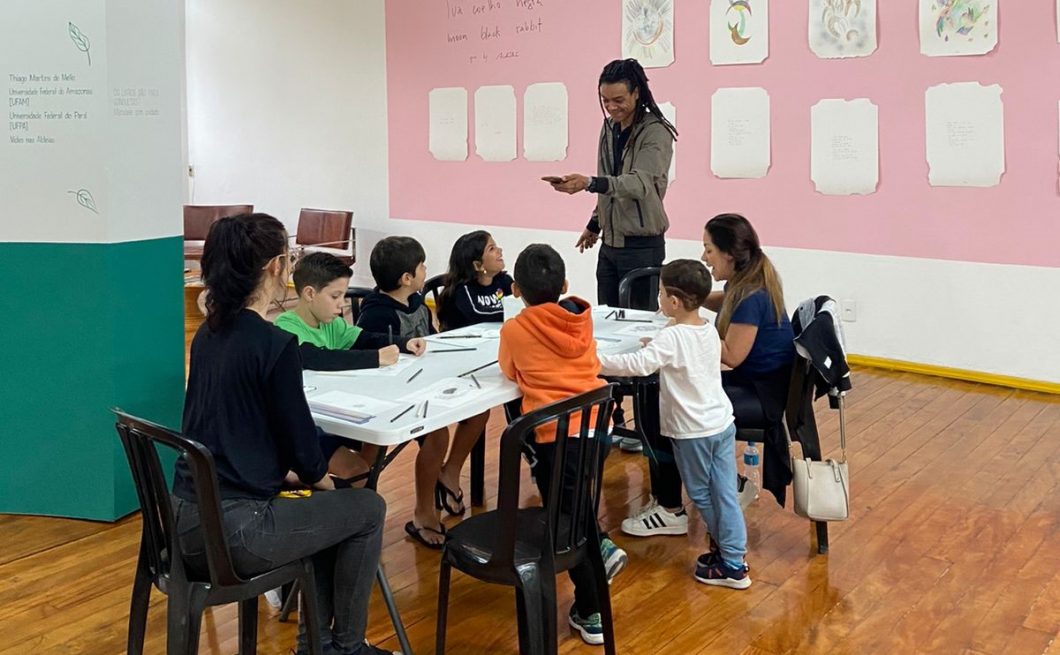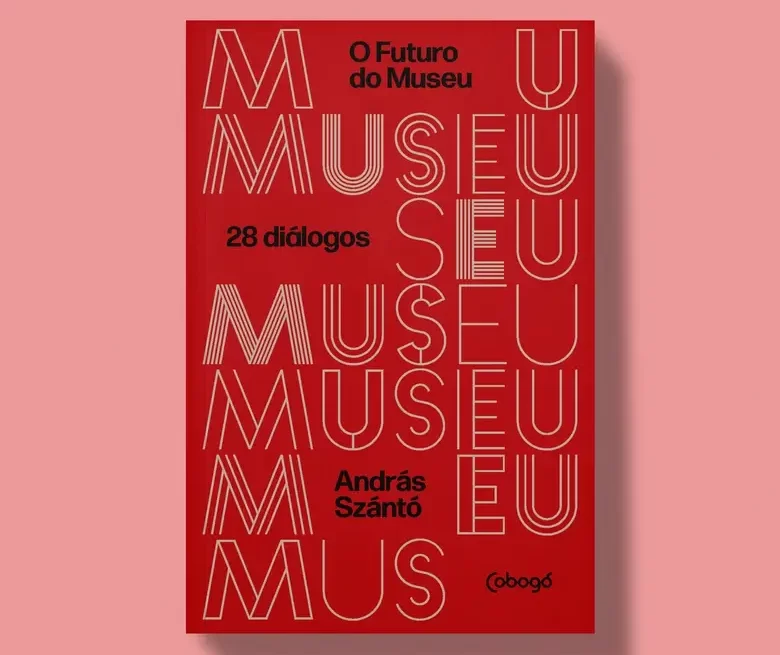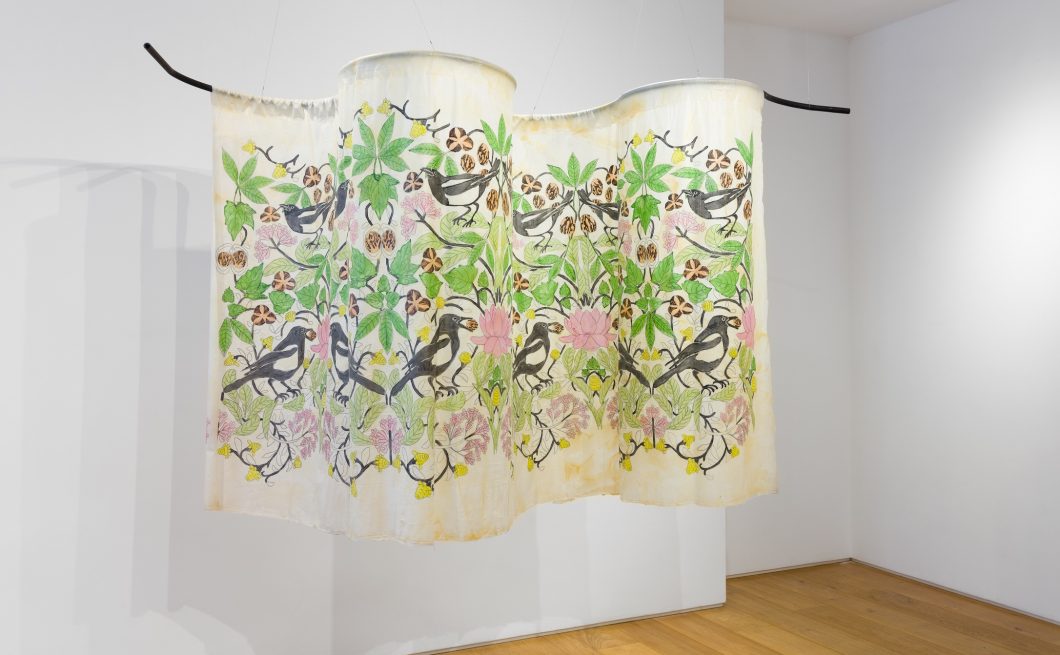EDITORIAL | A THOUSAND NAMES OF THE SAME EMERGENCY, BY ALDONES NINO
On September 6th, the 35th São Paulo Biennial opened to the public, entitled “Choreography of the Impossible”, curated by Diane Lima, Grada Kilomba, Hélio Menezes and Manuel Borja-Villel. Although I have already followed several texts about this edition of the Biennale, I am not interested in highlighting the particularity of one or another work in question, as is common in this type of text. Even though I could talk about many of the works on display, my biggest interest is to highlight this choreography that has been designed in many locations, over many times. In the same way that Leda Maria Martins serves as an important theoretical basis for this exhibition, I consider it crucial that we think about a spiraling critical analysis for the many biennials and other events that have occurred in recent decades and that will continue to occur.
When considering this edition of the Biennale, we can notice a convergence of interests with previous editions and even with other events of international impact, such as the Venice Biennale or documenta. But why start analyzing an exhibition taking into account its links with other exhibition programs besides the project in question? I believe that biennials and other exhibition platforms are much more than simple presentations of projects aligned with the curators’ ideas; they embody clues, symptoms.
In this context, biennials and major exhibitions play a crucial role as symptoms of our search for understanding in the face of impossibilities. They become spaces where multiple cultural perspectives can manifest and dialogue, challenging the limitations imposed by traditional Western thought and enriching our appreciation of the complexity of the human experience. The Western way of thinking often shapes our relationship with the world, however, it has become increasingly noticeable that this perspective does not encompass the complex global reality. Countries in conflict, nations with policies that diverge from Western ideals and regions where religion dictates social norms are living witnesses of this diversity, and show that this perspective does not reflect the experiences of the majority of the world’s population.
The social and economic foundations of modernity use rhetorical frameworks that serve to reaffirm the superiority of the West (Europe – United States) through a series of techniques and strategies that have declined in recent decades, even though they prevailed in the 19th century and much of the 20th century. XX. In view of this, there is a movement that aims to bring together voices and poetics radically opposed to Western universality, when this is assimilated as a unified perspective that seeks to account for contemporary times.
Traditionally, choreography was understood as a set of movements and sequences that made up a dance, following a musical soundtrack. In contemporary dance, all of this has already been questioned, revisited, abandoned and reinterpreted. In the context of the Biennale, it is interesting to consider how choreography is a form of writing originating in the body and in the pulse of life. The body, a fundamental dimension of the human experience that is present in all our social, cultural and political interactions and relationships. Body definitions, in turn, play a crucial role in the formation of identities, as they shape the way people perceive themselves and are perceived by others. These definitions can be influenced by several factors, such as social norms, cultural expectations and hegemonic discourses. Considering the multiple ways in which the body is constructed and experienced in different cultural and social contexts, the complexity of these body-writing processes becomes evident.
The bodies are constantly engaged in an uninterrupted choreography, even when they are exhausted and seemingly immobile. Because when we consider the impossibility of movement of a body, we are based on a fallacious idea, since even a body at rest is incessantly crossed by internal movements that give it life. Even after life comes to an end, the movement of bacteria and other microscopic beings, invisible to the naked eye, continue to transform matter. We can draw a connection with the materialist philosophers of the 18th century or go back even further to Heraclitus, thus rescuing movement and change as fundamental imperatives. The movement of a simple muscle in our body echoes the materiality of our ancestors; Within each cell that makes us up, traces of people we have never met or know how to name resonate, but who still pulsate within us.
This Biennial, to a certain extent, presents several poetics that emerge from choreography in the face of impossibility, revealing the tangible result of the contexts and collaborations that surround each artist. Even though thought is subjected to attempts at control, imagination plays a fundamental role, capable of transcending physical, geographical and linguistic barriers. Impossibility, in this biennial, is no longer seen as a limitation, but rather as a springboard for abandoning what has already been established and thought out. In this narrative, the role of the imaginary becomes even more prominent, as it is through it that the boundaries of the possible are extended, allowing new perspectives and creative approaches to emerge, defying the limitations imposed by the physical world and pre-existing conventions.
The four curators involved bring with them extensive experience in academic and institutional fields, a frequent aspect in biennials of international scope. Taking as a starting point the perspectives of black philosophers, such as Denise Ferreira da Silva, Saidiya Hartman and Leda Maria Martins, this edition of the São Paulo Biennial channels the richness of these backgrounds into a distinctive energy reflected in the works on display. Many of which arise from the tension caused by racism, speciesism, sexism, xenophobia and other forms of oppression. However, these adversities are not limited to, opening escape routes for narratives that transcend precariousness and suffering in favor of the germination of mysteries that we cannot grasp in their entirety.
Although events of this magnitude are often closely linked to neoliberal logic, as evidenced by the considerable capital required to carry them out, and face challenges such as the commodification of art and the potential marginalization of alternative voices in favor of commercial agendas, it is undeniable that such platforms play a fundamental role in fostering dialogue and interaction, providing meetings and exchanges that, under other circumstances, might not occur. Many of the artists have already participated in different Biennials, but bringing them together in a city like São Paulo, marked by the limitations of internal connections and socioeconomic abysses, represents an important point of connection between the local artistic community and other poetics. Being able to materialize a perception of the ways in which the contemporary production of Brazilian art is aligned with other global movements of critical review.
Perhaps the greatest urgency of our time is to understand how other times coexist, how we are flooded by memories of the past and future dreams. This is not the first biennale to address these issues, and it certainly won’t be the last. And even if we create a thousand names, the same urgency will continue to echo in the coming decades: the urgency of abandoning the obliteration of other historical logics, going beyond Eurocentric domination and contributing to epistemic decolonization in the field of aesthetics and artistic production.
Aldones Nino
Research and Curatorial Projects Advisor at Instituto Inclusartiz (Rio de Janeiro, Brazil) and Curator of Collegium (Arévalo, Spain)






